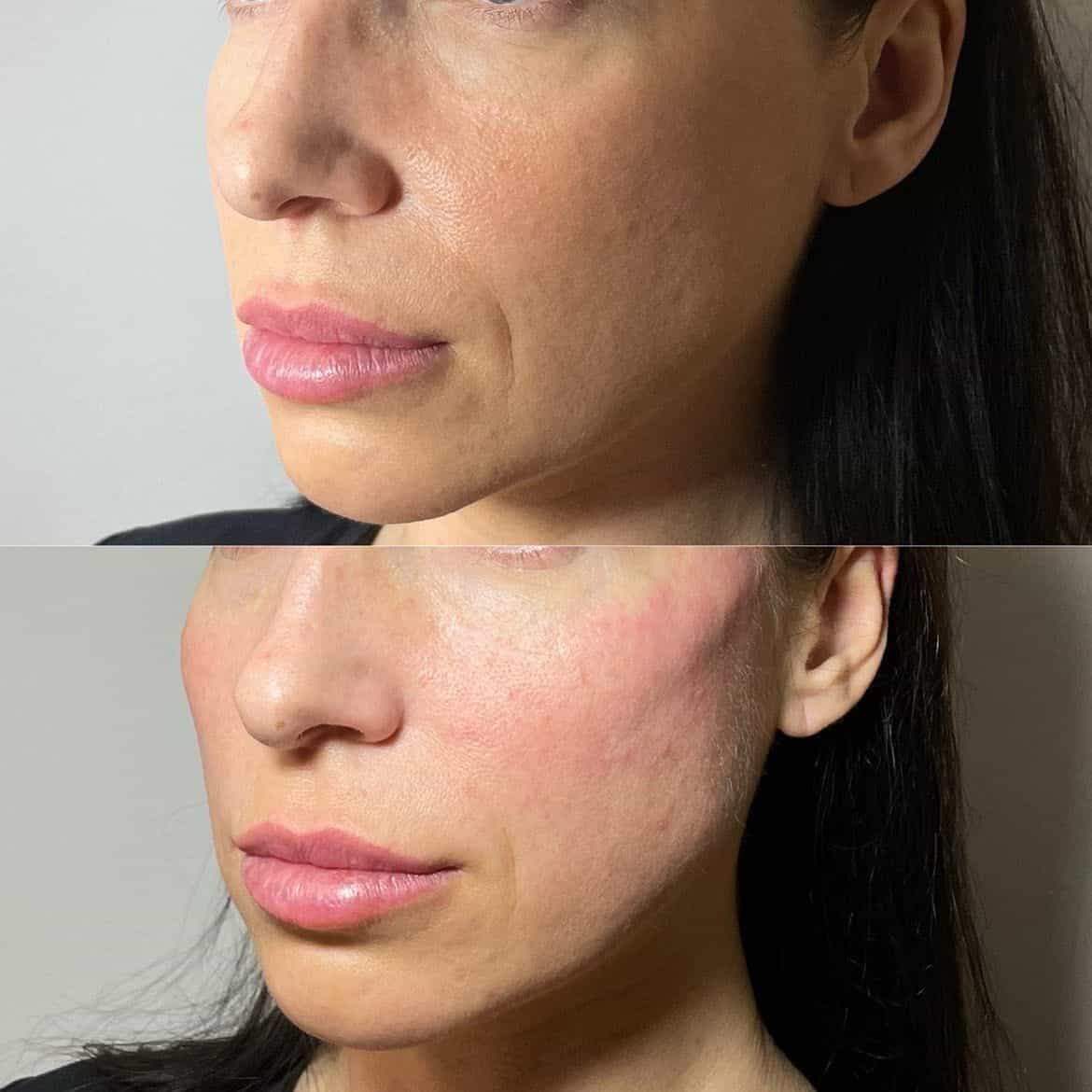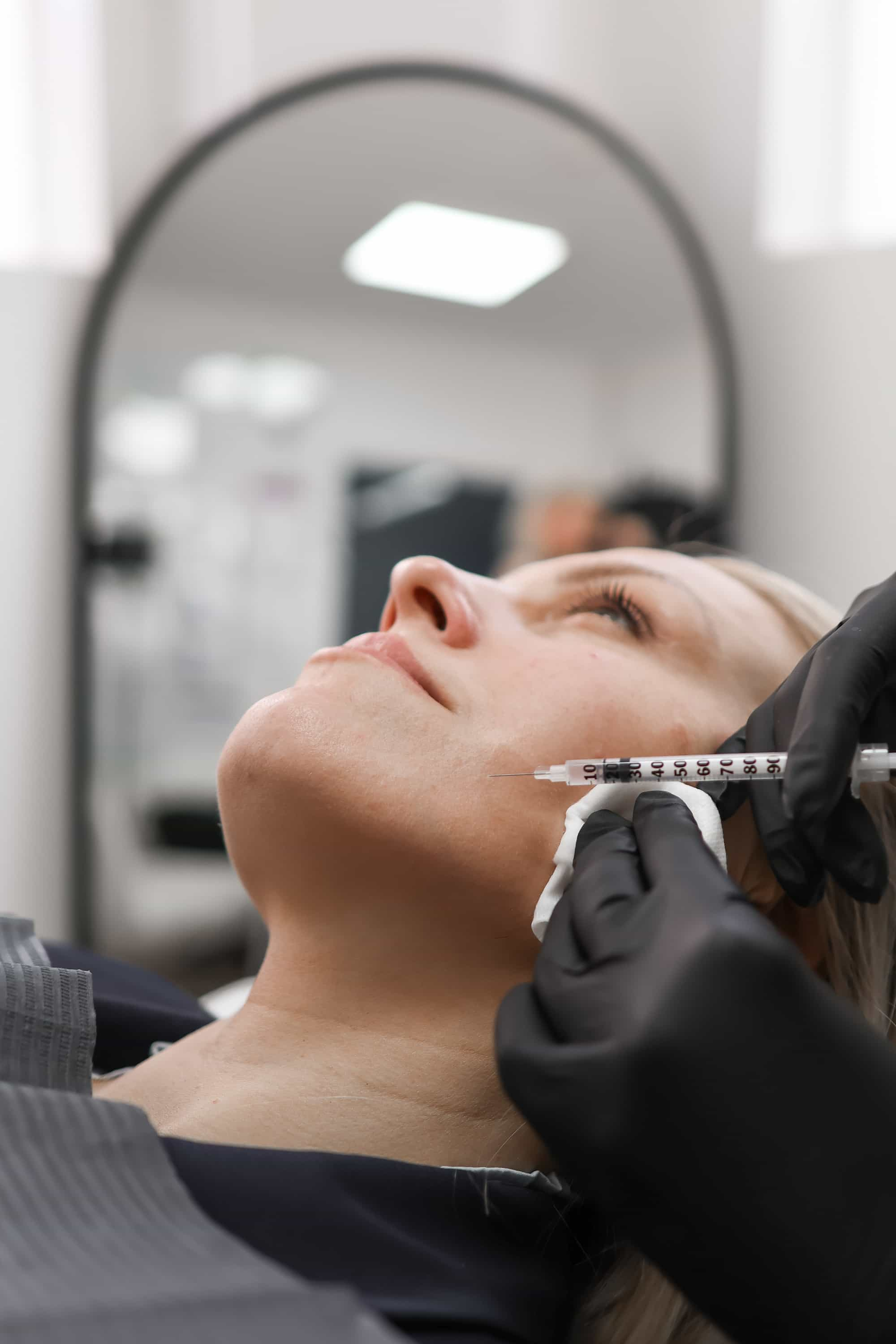Physical Factors
The physical factors influencing our facial expressions are multifaceted and play a crucial role in how we communicate nonverbally. From the intricate network of muscles controlling our mouth movements to the subtle interplay of bone structure and soft tissues, these elements contribute significantly to the nuances of human expression. Understanding these physical underpinnings can shed light on the reasons behind certain facial configurations, including the downward turn of the corners of the mouth, which often conveys sadness or displeasure.
Facial Structure
The shape and position of a person’s lips are largely determined by their facial bone structure. The jawbone, cheekbones, and nasal bones all contribute to the overall contours of the face, influencing where the corners of the mouth naturally fall. Some individuals may have a lower or more downturned jawline, which can lead to the appearance of perpetually downturned mouth corners, even when they are not feeling sad.
Muscle tone also plays a role. Strong facial muscles can lift and elevate the corners of the mouth, resulting in a more cheerful expression. Conversely, weakened or atrophied muscles might make it harder to raise the corners, contributing to a downward turn.
Muscle Weakness or Tension
Physical factors significantly contribute to the appearance of downturned mouth corners. The shape and position of the lips are primarily dictated by facial bone structure. The jawbone, cheekbones, and nasal bones all influence the overall contours of the face, impacting where the corners of the mouth naturally fall.
Muscle tone also plays a role in this phenomenon. Strong facial muscles can elevate the corners of the mouth, leading to a more cheerful expression. In contrast, weakened or atrophied facial muscles can make it difficult to raise the corners, resulting in a downward turn.
Dental Problems

The shape and position of a person’s lips are largely determined by their facial bone structure. The jawbone, cheekbones, and nasal bones all contribute to the overall contours of the face, influencing where the corners of the mouth naturally fall. Some individuals may have a lower or more downturned jawline, which can lead to the appearance of perpetually downturned mouth corners, even when they are not feeling sad.
Muscle tone also plays a role. Strong facial muscles can lift and elevate the corners of the mouth, resulting in a more cheerful expression. Conversely, weakened or atrophied muscles might make it harder to raise the corners, contributing to a downward turn.
Psychological Factors

While physical factors contribute significantly to facial expressions, psychological states also play a crucial role in shaping our nonverbal communication. The interplay between emotions and muscle movements can influence the position of our mouth corners, leading to expressions that convey feelings such as sadness, displeasure, or even contemplation.
Stress and Anxiety
Stress and anxiety can significantly impact facial expressions, including the downturn of the corners of the mouth. When experiencing stress, the body activates its fight-or-flight response, releasing hormones like cortisol. These hormones can cause muscle tension throughout the body, including the muscles responsible for controlling facial expressions. This tension can lead to a furrowed brow, clenched jaw, and downturned mouth corners.
Anxiety often manifests in similar ways. Individuals experiencing anxiety may feel a constant sense of unease or worry, which can contribute to muscle tension and a tendency to adopt guarded or withdrawn facial expressions. The persistent state of stress and heightened anxiety can lead to a more pronounced downturn of the mouth corners over time.
Depression
While physical factors contribute significantly to facial expressions, psychological states also play a crucial role in shaping our nonverbal communication. The interplay between emotions and muscle movements can influence the position of our mouth corners, leading to expressions that convey feelings such as sadness, displeasure, or even contemplation.
Stress and anxiety can significantly impact facial expressions, including the downturn of the corners of the mouth. When experiencing stress, the body activates its fight-or-flight response, releasing hormones like cortisol. These hormones can cause muscle tension throughout the body, including the muscles responsible for controlling facial expressions. This tension can lead to a furrowed brow, clenched jaw, and downturned mouth corners.
- Anxiety often manifests in similar ways. Individuals experiencing anxiety may feel a constant sense of unease or worry, which can contribute to muscle tension and a tendency to adopt guarded or withdrawn facial expressions.
- The persistent state of stress and heightened anxiety can lead to a more pronounced downturn of the mouth corners over time.
Anger or Sadness
While physical factors contribute significantly to facial expressions, psychological states also play a crucial role in shaping our nonverbal communication. The interplay between emotions and muscle movements can influence the position of our mouth corners, leading to expressions that convey feelings such as sadness, displeasure, or even contemplation.
Stress and anxiety can significantly impact facial expressions, including the downturn of the corners of the mouth. When experiencing stress, the body activates its fight-or-flight response, releasing hormones like cortisol. These hormones can cause muscle tension throughout the body, including the muscles responsible for controlling facial expressions. This tension can lead to a furrowed brow, clenched jaw, and downturned mouth corners.
Anxiety often manifests in similar ways. Individuals experiencing anxiety may feel a constant sense of unease or worry, which can contribute to muscle tension and a tendency to adopt guarded or withdrawn facial expressions. The persistent state of stress and heightened anxiety can lead to a more pronounced downturn of the mouth corners over time.
Medical Conditions
The appearance of downturned mouth corners is a common phenomenon influenced by a combination of physical factors and psychological states.
Neurological Disorders
The physical factors influencing our facial expressions are multifaceted and play a crucial role in how we communicate nonverbally. From the intricate network of muscles controlling our mouth movements to the subtle interplay of bone structure and soft tissues, these elements contribute significantly to the nuances of human expression. Understanding these physical underpinnings can shed light on the reasons behind certain facial configurations, including the downward turn of the corners of the mouth, which often conveys sadness or displeasure.
The shape and position of a person’s lips are largely determined by their facial bone structure. The jawbone, cheekbones, and nasal bones all contribute to the overall contours of the face, influencing where the corners of the mouth naturally fall. Some individuals may have a lower or more downturned jawline, which can lead to the appearance of perpetually downturned mouth corners, even when they are not feeling sad.
Muscle tone also plays a role. Strong facial muscles can lift and elevate the corners of the mouth, resulting in a more cheerful expression. Conversely, weakened or atrophied muscles might make it harder to raise the corners, contributing to a downward turn.
Hormonal Imbalances
While physical factors contribute significantly to facial expressions, psychological states also play a crucial role in shaping our nonverbal communication. The interplay between emotions and muscle movements can influence the position of our mouth corners, leading to expressions that convey feelings such as sadness, displeasure, or even contemplation.
Stress and anxiety can significantly impact facial expressions, including the downturn of the corners of the mouth. When experiencing stress, the body activates its fight-or-flight response, releasing hormones like cortisol. These hormones can cause muscle tension throughout the body, including the muscles responsible for controlling facial expressions. This tension can lead to a furrowed brow, clenched jaw, and downturned mouth corners.
Anxiety often manifests in similar ways. Individuals experiencing anxiety may feel a constant sense of unease or worry, which can contribute to muscle tension and a tendency to adopt guarded or withdrawn facial expressions. The persistent state of stress and heightened anxiety can lead to a more pronounced downturn of the mouth corners over time.
Hormonal imbalances can also play a role in causing downturned mouth corners.
- Thyroid disorders, such as hypothyroidism, can cause fatigue, depression, and changes in facial expression, including a downward turn of the mouth corners.
- Imbalances in neurotransmitters like serotonin and dopamine, which regulate mood and emotions, can also contribute to a downturned appearance.
It’s important to remember that a downturned mouth is not always indicative of sadness or depression.
Certain Medications
The physical factors influencing our facial expressions are multifaceted and play a crucial role in how we communicate nonverbally. From the intricate network of muscles controlling our mouth movements to the subtle interplay of bone structure and soft tissues, these elements contribute significantly to the nuances of human expression. Understanding these physical underpinnings can shed light on the reasons behind certain facial configurations, including the downward turn of the corners of the mouth, which often conveys sadness or displeasure.
The shape and position of a person’s lips are largely determined by their facial bone structure. The jawbone, cheekbones, and nasal bones all contribute to the overall contours of the face, influencing where the corners of the mouth naturally fall. Some individuals may have a lower or more downturned jawline, which can lead to the appearance of perpetually downturned mouth corners, even when they are not feeling sad.
Muscle tone also plays a role. Strong facial muscles can lift and elevate the corners of the mouth, resulting in a more cheerful expression. Conversely, weakened or atrophied muscles might make it harder to raise the corners, contributing to a downward turn.
While physical factors contribute significantly to facial expressions, psychological states also play a crucial role in shaping our nonverbal communication. The interplay between emotions and muscle movements can influence the position of our mouth corners, leading to expressions that convey feelings such as sadness, displeasure, or even contemplation.
Stress and anxiety can significantly impact facial expressions, including the downturn of the corners of the mouth. When experiencing stress, the body activates its fight-or-flight response, releasing hormones like cortisol. These hormones can cause muscle tension throughout the body, including the muscles responsible for controlling facial expressions. This tension can lead to a furrowed brow, clenched jaw, and downturned mouth corners.
Anxiety often manifests in similar ways. Individuals experiencing anxiety may feel a constant sense of unease or worry, which can contribute to muscle tension and a tendency to adopt guarded or withdrawn facial expressions. The persistent state of stress and heightened anxiety can lead to a more pronounced downturn of the mouth corners over time.
Hormonal imbalances can also play a role in causing downturned mouth corners. Thyroid disorders, such as hypothyroidism, can cause fatigue, depression, and changes in facial expression, including a downward turn of the mouth corners.
Imbalances in neurotransmitters like serotonin and dopamine, which regulate mood and emotions, can also contribute to a downturned appearance.
It’s important to remember that a downturned mouth is not always indicative of sadness or depression.
Lifestyle Factors
Lifestyle factors can significantly impact the physical appearance of our faces. These factors encompass a wide range of influences, from diet and exercise habits to stress levels and sleep quality.
Poor Posture
Lifestyle factors can significantly impact the physical appearance of our faces. These factors encompass a wide range of influences, from diet and exercise habits to stress levels and sleep quality.
- Diet: A healthy diet rich in fruits, vegetables, and essential nutrients supports overall health, including skin elasticity and muscle tone. Conversely, diets high in processed foods and sugars can contribute to inflammation and premature aging, potentially affecting facial appearance.
- Exercise: Regular physical activity promotes blood circulation, delivering oxygen and nutrients to the skin. Exercise also helps maintain muscle mass, which can contribute to a more youthful and defined facial structure.
- Sleep: Adequate sleep is crucial for skin repair and rejuvenation. During sleep, the body produces collagen, a protein that keeps skin firm and elastic. Sleep deprivation can lead to dark circles under the eyes, wrinkles, and a dull complexion.
- Stress Management: Chronic stress releases hormones that can contribute to muscle tension, leading to facial expressions like frowning or a downturned mouth. Incorporating stress-reducing techniques like meditation, yoga, or deep breathing exercises can help alleviate stress and promote a more relaxed appearance.
Lack of Sleep
The physical factors influencing our facial expressions are multifaceted and play a crucial role in how we communicate nonverbally. From the intricate network of muscles controlling our mouth movements to the subtle interplay of bone structure and soft tissues, these elements contribute significantly to the nuances of human expression. Understanding these physical underpinnings can shed light on the reasons behind certain facial configurations, including the downward turn of the corners of the mouth, which often conveys sadness or displeasure.
The shape and position of a person’s lips are largely determined by their facial bone structure. The jawbone, cheekbones, and nasal bones all contribute to the overall contours of the face, influencing where the corners of the mouth naturally fall. Some individuals may have a lower or more downturned jawline, which can lead to the appearance of perpetually downturned mouth corners, even when they are not feeling sad.
Muscle tone also plays a role. Strong facial muscles can lift and elevate the corners of the mouth, resulting in a more cheerful expression. Conversely, weakened or atrophied muscles might make it harder to raise the corners, contributing to a downward turn.
While physical factors contribute significantly to facial expressions, psychological states also play a crucial role in shaping our nonverbal communication. The interplay between emotions and muscle movements can influence the position of our mouth corners, leading to expressions that convey feelings such as sadness, displeasure, or even contemplation.
Stress and anxiety can significantly impact facial expressions, including the downturn of the corners of the mouth. When experiencing stress, the body activates its fight-or-flight response, releasing hormones like cortisol. These hormones can cause muscle tension throughout the body, including the muscles responsible for controlling facial expressions. This tension can lead to a furrowed brow, clenched jaw, and downturned mouth corners.
Anxiety often manifests in similar ways. Individuals experiencing anxiety may feel a constant sense of unease or worry, which can contribute to muscle tension and a tendency to adopt guarded or withdrawn facial expressions. The persistent state of stress and heightened anxiety can lead to a more pronounced downturn of the mouth corners over time.
Lack of sleep can also contribute to a downturned appearance. During sleep, our bodies repair and rejuvenate, including skin cell turnover and muscle recovery. Chronic sleep deprivation can result in fatigue, decreased blood flow to the face, and prominent under-eye circles, potentially making the mouth corners appear more downturned.
While physical factors contribute significantly to facial expressions, psychological states also play a crucial role in shaping our nonverbal communication. The interplay between emotions and muscle movements can influence the position of our mouth corners, leading to expressions that convey feelings such as sadness, displeasure, or even contemplation.
Stress and anxiety can significantly impact facial expressions, including the downturn of the corners of the mouth. When experiencing stress, the body activates its fight-or-flight response, releasing hormones like cortisol. These hormones can cause muscle tension throughout the body, including the muscles responsible for controlling facial expressions. This tension can lead to a furrowed brow, clenched jaw, and downturned mouth corners.

Anxiety often manifests in similar ways. Individuals experiencing anxiety may feel a constant sense of unease or worry, which can contribute to muscle tension and a tendency to adopt guarded or withdrawn facial expressions. The persistent state of stress and heightened anxiety can lead to a more pronounced downturn of the mouth corners over time.
Hormonal imbalances can also play a role in causing downturned mouth corners. Thyroid disorders, such as hypothyroidism, can cause fatigue, depression, and changes in facial expression, including a downward turn of the mouth corners.
Imbalances in neurotransmitters like serotonin and dopamine, which regulate mood and emotions, can also contribute to a downturned appearance.
It’s important to remember that a downturned mouth is not always indicative of sadness or depression.
Diet Deficiencies
Lifestyle factors play a significant role in the overall health and appearance of our faces.
A balanced diet rich in fruits, vegetables, and essential nutrients supports skin elasticity and muscle tone, contributing to a more youthful and vibrant complexion. Conversely, diets high in processed foods and sugars can lead to inflammation and premature aging, potentially affecting facial appearance.
Regular physical activity promotes blood circulation, delivering oxygen and nutrients to the skin cells and muscles. Exercise helps maintain muscle mass, which is essential for a strong and defined facial structure.
Adequate sleep allows the body to repair and regenerate, including skin cell turnover and muscle recovery. Sleep deprivation can lead to dark circles under the eyes, wrinkles, and a dull complexion, potentially making the mouth corners appear more downturned.
Chronic stress releases hormones that can cause muscle tension, leading to facial expressions like frowning or a downturned mouth. Incorporating stress-reducing techniques such as meditation, yoga, or deep breathing exercises can help alleviate stress and promote relaxation, positively impacting facial appearance.
Discover the best smile treatments with Dr. Laura Geige at It’s Me & You Clinic.
- Pop, Fizz, Chill: The THC Soda Trend Explained - November 3, 2025
- Polynucleotides Injectables Near Leatherhead, Surrey - November 1, 2025
- Polynucleotides Injectables Near Addlestone, Surrey - October 30, 2025
